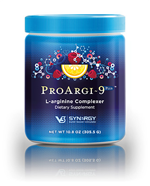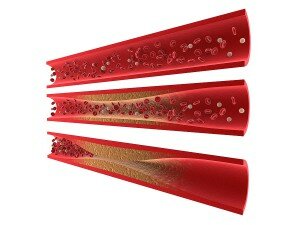 L-Arginine supplements have long been a part of the world of body building and strength training. Just recently Dr. Oz has been talking about L-Arginine supplements for cardiovascular health. Because of this there is a growing interest in the general public about L-Arginine supplements. Unfortunately, not all of the correct information is being given to help consumers figure out how to choose the best L-Arginine Supplements to help them with their cardiovascular health.
L-Arginine supplements have long been a part of the world of body building and strength training. Just recently Dr. Oz has been talking about L-Arginine supplements for cardiovascular health. Because of this there is a growing interest in the general public about L-Arginine supplements. Unfortunately, not all of the correct information is being given to help consumers figure out how to choose the best L-Arginine Supplements to help them with their cardiovascular health.
This Video Provides Guidelines on How to Compare L-Arginine Supplements!
There are five key areas to consider when you’re choosing L-Arginine Supplements. They are: Ingredients, Price, Quality Assurance, Clinical Studies, and Guarantee. This video covers all five areas and will be a definitive guide for helping you choose the best in L-Arginine Supplements.
Properly Formulated L-Arginine Supplements Create Nitric Oxide!
The main reason for taking L-Arginine Supplements is to effectively create nitric oxide – the master signaling molecule of your entire cardiovascular system. As you learned in the video above your endothelium, which lines all of your cardiovascular system, is a multi-functioning organ. It’s involved in metabolic, immunologic, and cardiovascular functions. One of its primary functions is to properly produce nitric oxide.
Specific to your cardiovascular system, nitric oxide is critically important for the proper regulation of blood pressure, helps to prevent strokes and heart attacks by keeping blood platelet cells from sticking together, and helps to repair the endothelium to keep it healthy and free from plaque formations and calcification. For men, nitric oxide is needed for an erection. No nitric oxide no sex!
As this Nobel Prize winning information is finally reaching the general public there has been an ever increasing interest in L-Arginine supplements. But not all L-Arginine supplements are equally effective in creating nitric oxide.
Key Questions to Ask in Choosing L-Arginine Supplements!
If you want to improve the health of your endothelium and nourish it properly for improved nitric oxide production, then choosing your L-Arginine supplements is critical to helping you achieve positive results. Here are six key questions to ask in making your choice on L-Arginine supplements:
- Does it include L-citrulline? If it doesn’t, then you’re wasting your time and money.
- Does it include sufficient amounts of both L-arginine and L-citrulline to create a synergistic and therapeutic benefit? According to Dr. Ignarro you need 4-6 grams of L-arginine and 200 to 1000 mg of L-citrulline to have a therapeutic effect. Anything less and you’re not going to get improved nitric oxide production.
- What are the quality-control standards set by the manufacture? This is important to guarantee consistency and potency in the manufactured product.
- Who is the product formulator and do they have experience in L-Arginine / L-Citrulline therapy?
- Does the L-Arginine Supplement have any clinical studies to back up its effectiveness?
- Does the L-Arginine Supplement offer a 100% Money Back Satisfaction Guarantee?
I hope this information on L-Arginine supplements will help you cut through the wild claims made by product manufacturers, because this area of natural health can help you improve your cardiovascular health.
It is important to note that Nobel Prize winning science has clearly shown nitric oxide to be the body’s natural cardiovascular wonder drug. Now it’s important to choose the L-Arginine supplements that will help you achieve the highest therapeutic benefit for your cardiovascular system.
Together we can work to save a million lives!
Dan Hammer
Dan Hammer has a background in biology, chemistry, and exercise physiology. He used to run one of the largest health club operations in the Chicagoland area and has been helping people with their wellness issues for more than 25 years.
The information contained in this article is for general information purposes only and never as a substitute for professional medical advice or medical exam. The information on how to compare L-arginine supplements has not been evaluated by the Food and Drug Administration and should not be used to diagnose, treat, cure or prevent any disease without the supervision of a qualified medical doctor.

 There is a lot of confusion between arteriosclerosis and atherosclerosis but one thing is certain,
There is a lot of confusion between arteriosclerosis and atherosclerosis but one thing is certain,